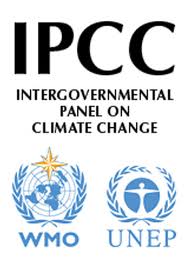The New IPCC Assessment, Carbon Budgets and the Role of the U.S.
National Academy Study Used the Carbon Budget Approach Taken in New IPCC Report to Show How the U.S. Could Limit Emissions
 Today’s major environmental news is, of course, the release of the Intergovernmental Panel on Climate Change’s 5th Assessment Report addressing the physical science basis for climate change. The findings are strong and alarming: warming of the climate system is unequivocal and unprecedented; atmospheric concentrations of carbon dioxide and other greenhouse gas emissions “have increased to levels unprecedented in at least the last 800,000 years” and “human influence on the climate system is clear.” The IPCC addresses glacier melting, sea level rise, the global water cycle, air pollution, ocean acidification, future warming and more and the news is all grim. The Summary of the report can be found here.
Today’s major environmental news is, of course, the release of the Intergovernmental Panel on Climate Change’s 5th Assessment Report addressing the physical science basis for climate change. The findings are strong and alarming: warming of the climate system is unequivocal and unprecedented; atmospheric concentrations of carbon dioxide and other greenhouse gas emissions “have increased to levels unprecedented in at least the last 800,000 years” and “human influence on the climate system is clear.” The IPCC addresses glacier melting, sea level rise, the global water cycle, air pollution, ocean acidification, future warming and more and the news is all grim. The Summary of the report can be found here.
The authors of the 5th Assessment also took a new tack in this report by thinking about the human contribution to climate change in terms of an allowable “budget” of greenhouse gas emissions that we can emit before we send the globe’s climate systems into complete chaos. As the New York Times explains, the budget is about one trillion tons of greenhouse gases and we’ve already emitted about half that budget. If we continue along our current path of consuming energy, we’ll hit the budget around 2040. The major challenge we now face, of course, is figuring out how to get the world’s largest emitters to change the current path so that we don’t hit the budget in 2040 and emit that trillionth ton. We all know the political realities and the difficulties. The IPCC will release a future report that will assess the tools available to reduce emissions (full disclosure: I’m helping to draft part of the report that will come from what’s known as Working Group III).
But the National Academy of Sciences has already laid out recommendations that followed a similar “budget” approach as applied to the United States in a 2010 report, Limiting the Magnitude of Future Climate Change. I served on the panel that produced the report and remember the now-quaint worry we had that Congress would pass legislation to establish a carbon cap-and-trade program before our report came out that would make our recommendations obsolete before we went to press. The report provides a series of recommendations to achieve both near and long term reductions in carbon emissions so that the U.S. emits between 170 and 200 gigatons (a gigaton is one billion tons) between 2012 and 2050, leading to reductions of up to 80 percent of 1990 emissions levels (the summary of the report provides an explanation of the budget approach). The National Academy recommendations are not surprising: put a price on carbon, accelerate the development of renewable energy, invest in energy efficiency, support aggressive research and development, and so forth. But they’re worth highlighting in order to connect the IPCC budget approach with what the U.S. can actually do to play its part in avoiding the most catastrophic effects of a warming planet. The overlap isn’t perfect: the Academy Report was done without the benefit of the new IPCC report, the question of what the relationship should be between the U.S.’s share of the overall budget and the rest of the globe’s is a difficult and contentious one, etc. But the Academy Report does help illustrate how to think in carbon budget terms for U.S. policy. It tells us what we need to begin to do so that we don’t bust the carbon budget bank. We’re even beginning to make progress toward doing so domestically with the Obama Administration’s automobile standards, new source performance standards for new power plants and other policies combined with far-reaching efforts from the state of California and strong pushes toward energy efficiency from states like Massachusetts. Some global efforts are also promising, with the European Union’s Emissions Trading System, China’s entry into the cap-and-trade world in its major cities, investments in slowing deforestation through programs like REDD-plus and so forth. But we have a long, long way to go to achieve the truly major transformation we’ll need to avoid altering the planet in ways that are truly catastrophic. The Academy report at least gives some direction about how to get there.
Reader Comments
One Reply to “The New IPCC Assessment, Carbon Budgets and the Role of the U.S.”
Comments are closed.







Dear Ann,
The IPCC has been discredited and is no longer relevant. Climate change is normal and not catastrophic. Relax